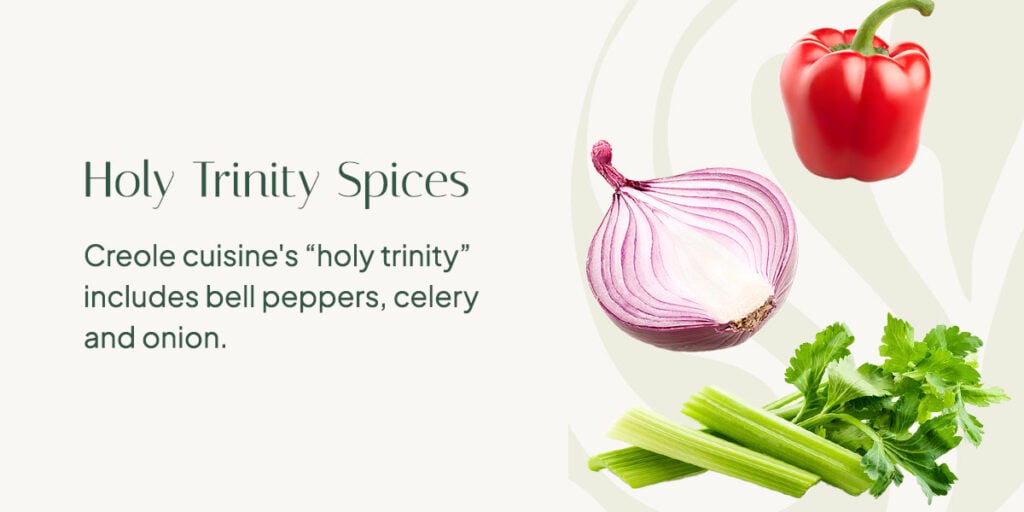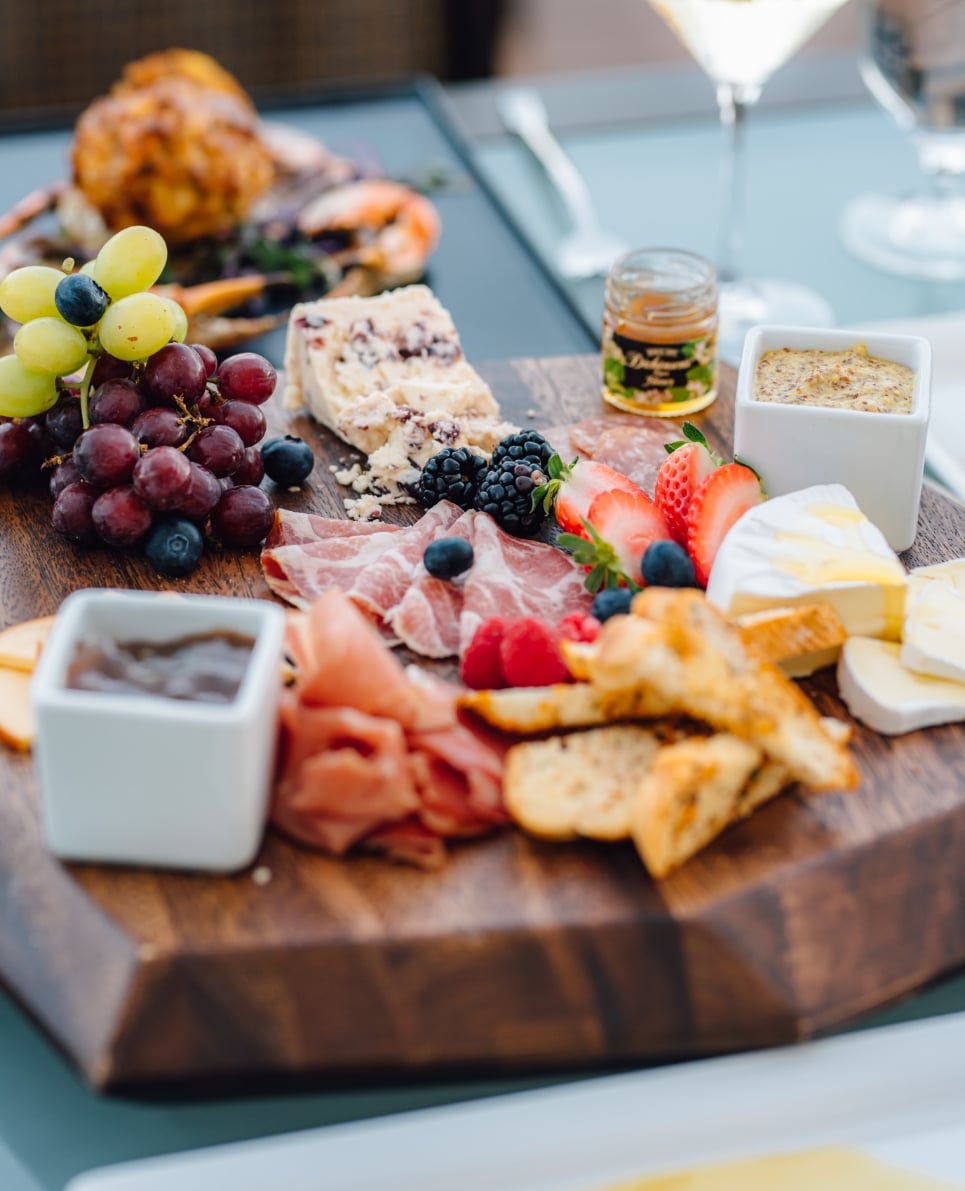There is a rich and fascinating history behind Southern-style foods that makes them so special. From the cultural influences and inspirations drawn by the Cajun and Creole people to the stories that brought them to Louisiana, there is a lot more to appreciate than the taste of this delicious style of cooking.
One of the most popular types of Southern cooking is breakfast, which features an array of delectable sweet and savory meals that people now enjoy throughout the world. In some ways, Creole and Cajun cuisines have inspired the Southern breakfast dishes we hold dear, making for a truly unique culinary history.
This guide will walk you through the beginnings of Creole and Cajon cuisines, how elements of the Southern breakfast came to be, and recipes you can try to experience the best Southern breakfast or brunch at home.
The Origins of Creole and Cajun Cuisines in Louisiana
Creole and Cajun cuisines are a fundamental part of the DNA of Southern-style breakfasts. The histories of these cuisines are just as rich as their flavors, and knowing how they came to be makes it easier to immerse yourself in them.
The History of Cajun Cuisine
Cajun food originated in the United States during the mid-19th century. Many mistakenly think Cajun cooking is specific to Louisiana and solely found there. However, it is also commonplace in Southern Mississippi. It can even be found in Canada, specifically in the French-centric Montreal and Quebec provinces — in fact, Cajun is a blend of cultures from French-speaking Canada and Louisiana.
Cajun cuisine originates from Acadian settlers, who originally came from what is now Nova Scotia. Due to conflict with the British, they had to leave their home and eventually settled in Southern Louisiana. Their food preparation style melded with Native American cooking styles, and as a result, Cajun cuisine was born.
The Acadian influence is still present in modern Cajun cuisine, but it did evolve slightly as time went on. The mixing and melding of other cultural influences triggered the evolution of Cajun food. Inspiration was taken from the other cultures in the area, including West African, Spanish and French cooking. This melting pot of cultural diversity gave us the legendary cuisine as we know it today.
The History of Creole Cuisine
Creole cuisine also originates from Louisiana and was influenced by the same cultures as Cajun cuisine. “Creole,” as a term, references the European and New World cultures that shaped it. The name comes from the Portuguese word “crioulo,” meaning “to raise.” Creole cuisine comes from the fusion of all these nations’ cultures.
The Creole people are those born to settlers in French colonial Louisiana, specifically those from New Orleans. Colonial Creole dishes are often perceived as a more “high-brow” version of Cajun cuisine. Historically, those with more money and resources would have access to better kitchen facilities, more ingredients and a wider array of spices than those in the country cooking Cajun food.
Remoulade sauce is considered part of Creole cuisine and not Cajun. It contains almost a dozen different ingredients that would not be used by those making Cajun food.
The Difference Between Creole and Cajun Cuisine
A simplistic description of the differences between Creole and Cajun cuisine is that Creole cuisine is seen as “city food,” while Cajun food is seen as “country food.” In other words, based on each cuisine’s origins, you’re much likelier to find Creole food options in places like Baton Rouge and New Orleans and Cajun dishes outside of those cities.

While both cooking practices share a lot of similar ingredients, the main distinctions come from the two different types of people behind these culinary delights. For example, remoulade sauce is considered part of Creole cuisine, containing almost a dozen different ingredients that would not be used by those making Cajun food.
With more than 100 years of cuisine history, you can find all kinds of ingredients in Creole and Cajun cuisine, such as:
- Thyme: This herb is more present in Creole dishes than in Cajun food. Thyme adds a subtle, earthy flavor to the dishes it’s used in.
- Okra: Okra is a popular vegetable used in Creole cuisine and adds flavor and texture to dishes like jambalaya and gumbo.
- Cayenne pepper: This is a staple spice used for seasoning a lot of Cajun meals. It adds depth and heat to the flavor of the dishes used.
- Andouille sausage: This sausage is made of pork and spices and is a staple in many Creole dishes.
- File powder: File powder is a spice of ground sassafras leaves. It provides a unique flavor and texture when used in gumbo.
- Holy trinity spices: Creole cuisine’s “holy trinity” includes bell peppers, celery and onion. It’s a variation of French mirepoix, which is made of celery, onions and carrots.

The Cultural Significance of Southern Breakfasts
In the South, breakfast is more than just a meal. It’s seen as an opportunity to gather with loved ones, have meaningful discussions and share a delicious meal together. Southern cooking encompasses the cultural heritage of the South and its rich history.
How Breakfast Evolved in the South
When we think of breakfast food, we usually picture eggs, bacon, sausages, pancakes, muffins and other meats, pastries and grains. In the South, breakfast can take on a completely different profile with popular dishes like fried green tomatoes, cheesy grits, red beans and rice, and biscuits and gravy. Depending on where you are in the South, you may even find different types of fish as an option for breakfast.
Louisiana specifically contributes a rich history to the traditional Southern breakfast. New Orleans is said to be the birthplace of brunch in the United States — in the late 1800s, Madame Elizabeth Begue offered a “second breakfast” at her and her husband’s restaurant, H. Bégué’s Exchange. This Southern-style brunch was served at 11 a.m., which was the perfect meal for dock workers just getting off their shifts at the same time.
Of course, baked goods like waffles and beignets have been a stand-out feature in Louisiana’s culinary history for decades. In particular, beignets are said to have come from French settlers who first arrived in Canada and then moved to Louisiana in the 18th century. These are some of the same settlers who created Cajun food.
These are some iconic dishes used in breakfasts and brunches in Louisana and throughout the South:
- Hash brown casserole: Hash brown casseroles are a versatile side dish. There is a variation of this recipe for everyone’s tastes and preferences. It’s easy to make, freezes well and is a delicious part of any brunch.
- Livermush: Sometimes known as liver pudding, livermush comes in loaves and is served in fried slices. It’s a regional favorite in the South and is enjoyed with a side of eggs and grits.
- Grits: Grits is a staple of Southern-style breakfasts and dinners. Made of ground corn, this porridge-like meal is both filling and easy to make. Grits pair well with shrimp or cheese, or you can enjoy them plain.
- Biscuits: Biscuits are the perfect complement to any Southern breakfast or brunch. One of the best ways to enjoy your biscuits is by covering them with breakfast gravy and placing an egg on top. Of course, you can also butter them up and slather on some jam.
- Country ham: Southern-style country ham is heavily salted and preserved by curing and smoking. It’s delicious by itself or on a biscuit.
- Beignets: This deep-fried pastry is a type of fritter served with powdered sugar and made using active dry yeast. A New Orleans brunch spread isn’t complete without these!
- Boudin: Boudin is a type of sausage associated with French, Belgian, Swiss, Luxembourgish, Creole and Cajun cuisine. It’s a type of black pudding made with pork fat, pork liver, onions, red pepper, rice and parsley.
Popular Southern Breakfast Food to Try
Looking to make yourself a Southern breakfast at home? Below, you’ll find a few recipes for some of the most iconic breakfast dishes that come from the South.
1. Buttermilk Biscuits

Making deliciously soft buttermilk biscuits is as easy as following a simple recipe. All you need to make one of the best Southern breakfast meal items is flour, buttermilk, chilled unsalted butter and leavening. Leavening is a powder made of salt, baking soda and baking powder. You’ll also need a large mixing bowl, measuring cups, spoons, a pastry blender, a non-stick surface for rolling, a food processor, a baking pan, a pastry brush and biscuit cutters.
Preheat your oven to 425 degrees Fahrenheit and line your baking sheet with parchment paper. Sift all dry ingredients together in your large mixing bowl. Cut the butter into cubes, place them in the mixing bowl of dry ingredients and pulse the mixture in a food processor until it becomes crumbly and resembles peas.
Mix the cold buttermilk into the crumbs until thoroughly moist. Add more buttermilk if required. Make sure the dough is not too wet while also being slightly sticky. Place the dough on a lightly floured surface, folding the dough in turns. Then, roll the dough out until it’s about 1/2 an inch thick. Use a cookie cutter to cut out your biscuits.
Place each biscuit 2 inches apart on the baking sheet. Brush melted butter or heavy cream on each biscuit, and then put the tray in the oven. Serve with your favorite spreads or as a base for a delicious gravy.
2. Boudin
Try this historically accurate boudin recipe to enjoy a genuine piece of Cajun and Creole breakfast history. Boil the rice in water with salt. Place liver and pork meat in a deep pot and fill with cold water until the contents have been submerged. Place it on the stove and boil until the meat is tender. When tender, remove the pot from the heat, pour the water out slowly and let the meat cool.
Chop the onions and parsley. Place chopped ingredients and meat mixture in a large pan. Then, add the cooked rice, salt and red pepper to taste. Make sure your seasoning is to your preference before mixing everything together.
Prepare the boudin sausage casings by cutting them into 12-inch long pieces. Rinse them with hot water and place them in a bowl of room-temperature or warm water until you are ready to fill them.
Use a spoon to transfer all the sausage ingredients into the casing and tie the other end. Place half the sausages you’ve made into a big gumbo pot. Handle them carefully to avoid breaking the casing. Cover the boudins in cold water and simmer them for up to 20 minutes — don’t let them boil. Then, repeat the process for the rest of the sausages.
If you’d rather try a simpler approach to making boudin, check out this boudin balls recipe for your next brunch.
3. Cheese Grits
You can make this tasty cheese grits recipe in under an hour. All you need is water or chicken broth, whole milk, kosher salt, cayenne pepper, grits, grated sharp cheddar cheese, unsalted butter, eggs and ground black pepper.
Combine the water or broth, salt, milk and cayenne pepper in a medium saucepan. Whisk in your grits and bring the heat to a simmer. Cover and cook for 30 minutes while stirring it occasionally. Stir in the butter and cheese until everything is evenly incorporated. Season with pepper and taste. Remove it from the oven and cool for five minutes before serving.
Book a Reservation for Breakfast at Tallulah

If you want to experience a Southern-style breakfast with an array of delicious food options, book a reservation for breakfast at Tallulah Crafted Food and Wine Bar. We offer a selection of traditional dishes that will delight your tastebuds and give you a truly memorable Baton Rouge brunch experience.
We use a variety of seasonal ingredients, and our extensive breakfast menu makes use of the freshest ingredients to give you an authentic Southern meal. We have a table for you and your friends and family. Join us at your earliest convenience and contact us today to book your reservation. We can’t wait to serve you!



